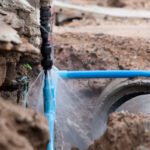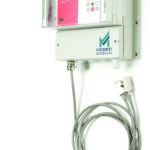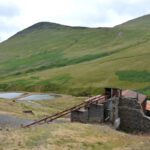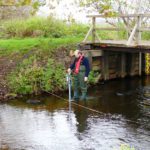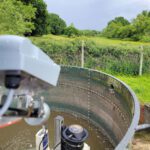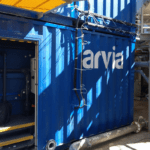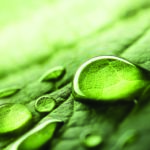Update gives insights into non-acoustic leak technologies
Technology company Ovarro has partnered with UK Water Industry Research (UKWIR) to update the sector on advancements in non-acoustic leak detection techniques.
The update provides...
First Scotland-wide drugs and microplastics test of rivers launched
Environmental scientists at The James Hutton Institute have launched the first nation-wide drug and microplastics test on Scotland’s rivers to help shed light on...
Navigating Europe’s restriction on microplastics
Legislators in Europe seem to be keeping a closer eye on microplastics, with the introduction of European Union (EU) Regulation 2023/2055 in September being...
Trade effluent monitoring in Essex
This article contains paid for content produced in collaboration with Pollution & Process Monitoring (PPM).
Pollution & Process Monitoring (PPM) has engineered a bespoke analytical...
Katronic KATflow 150 achieves MCERTS approval
This article contains paid for content produced in collaboration with Katronic.
Katronic’s KATflow 150 Advanced clamp-on flowmeter has gained approval through the UK Environment Agency’s...
Mine water treatment relies on borehole loggers
For the last nine years, Severn Trent Services, has managed a contract for mine water treatment across the Coal Authority estate, including 73 mine...
Water flow monitor fills technology gap
The instrumentation company Nivus has developed a new hand-held portable flow monitoring technology in response to a requirement that was originally identified by the...
Measuring potable water quality: Why one size does not fit all
A wide variety of factors can affect the quality of potable water during treatment, ranging from the characteristics of the source water to factors...
Revolutionizing environmental monitoring with photonics
Sponsored content: In a world grappling with unprecedented environmental challenges, cutting-edge technology is reshaping the way we understand and safeguard our planet...
Managing information flow
An AI analytics platform has had a transformational impact on water management in a Norwegian municipality, writes Marco Westergren, chief analytics officer at technology...
Growing demand for storm overflow cameras
Water companies are now legally obliged to publish data on their storm overflows, but many of these discharge points are also increasingly being monitored...
Microplastics collect heavy metals, reports study from Ulaanbaatar
Surface cracks and biofilms on plastic particles might help spread pollution
Concerns about microplastic pollution arise not only because of the particles themselves, but...
Testing for halogens in wastewater will soon become mandatory
SciMed, a UK distributor of lab equipment, gives a brief rundown of what's required.
There are a number of AOX/TOX regulations in force, for example,...
Study promising for SERS detection of pesticides at low concentrations
A new form of low-cost, 3D-printed sensor can detect very low concentrations of pesticides in water samples.
It was developed by team of researchers from...
Building the business case for satellite IoT
Eric Ménard writes
The Operational IoT market continues to expand as organisations across the world imagine an extraordinary range of opportunities to leverage sensor technology....
Wild boar liver can be used to map PFAS contamination
A new German study uses the liver of wild boar to map PFAS contamination in the habitat of these animals.
The study focused on 66...
How old is that microplastic? A new way to estimate the age of microplastics...
Researchers have developed a new way to estimate the age of microplastics found in the upper oceans. The method involves a combination of analyzing...
Accounting for every drop: ABB awarded for work in New Zealand
Industrial automation technology firm ABB has won the 2023 Global Water Awards in the category “Smart Water Project of the Year” for its collaboration...
New water treatment technology for organic pollutants
Sponsored content: Arvia developed and refined a unique next-generation water treatment process, called Nyex Rosalox™, designed to target and destroy persistent organic pollutants.
Light trapped in a water droplet could help measure pollutants
Shining light on a water droplet creates an effect that is useful for exploring the properties of individual atoms, and may also help with...


